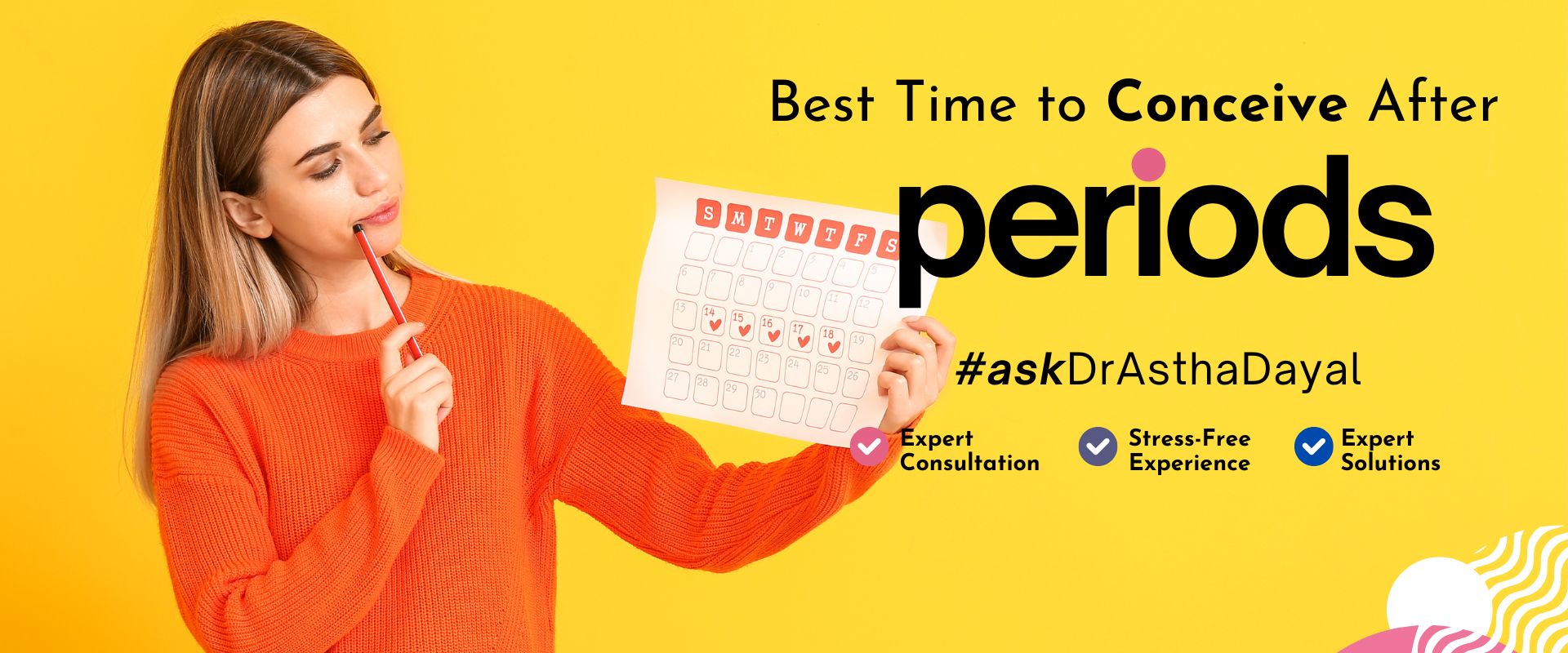Trying to conceive is a special journey, but one of the most common questions couples have is:
“What is the best time to get pregnant after my period?”
The fertile window and ways to improve your chances of getting pregnant naturally are explained by Dr. Astha Dayal, Director & Lead Consultant – Gynecology at CK Birla Hospital in Gurugram.
Understanding Your Menstrual Cycle
The menstrual cycle lasts 28 to 30 days for the majority of women. Day 1 of the cycle is the first day of your period.
- Ovulation, or the release of eggs, typically takes place 14 days prior to your subsequent menstrual cycle.
- This indicates that ovulation occurs around Day 14 of a 28-day cycle.
- The egg has a 24-hour lifespan in the body.
- The lifespan of a sperm is three days.
Important Note: In a 28-day cycle, this means that the best time to try for pregnancy is between Days 12 and 15.
Longer or Irregular Cycles
Not every woman has a 28-day cycle.
- Ovulation typically occurs on Day 21 of a 35-day cycle.
- Day 20 to Day 22 will then be your fertile window.
- Ovulation may not occur regularly if your cycles are irregular. It’s crucial to see your doctor for a hormonal evaluation in these situations.
Tools to Track Ovulation
Today, technology makes it easier to identify fertile days.
- Apps that track ovulation, like Flo, Glow, and Clue, can assist you in determining when you are fertile.
- Ovulation can be verified at home with ovulation kits, which work similarly to a urine pregnancy test.
- Your doctor’s ultrasound follicular monitoring is the most precise method of determining when the egg is ready to burst.
Also watch : How do you use ovulation kit? Pregnancy Tips for Women
Stress-Free Approach
Some couples feel pressured when they are told an exact date for trying. Instead of focusing on one day, a better approach is:
- Try regularly from Day 10 to Day 20 of your cycle.
- Aim for intercourse every other day during this window.
This way, you cover your fertile period without stress.
The Conclusion by Dr Astha Dayal
- Fertile window: your cycle’s days 10–20
- In a 28-day cycle, the most fertile days are days 12–14.
- Longer cycles: Day 21 of a 35-day cycle is an example of when ovulation occurs later.
- Unusual cycles: See your gynaecologist for a checkup.
By understanding your cycle and using the right tools, you can maximize your chances of conceiving naturally.
Frequently Asked Questions (FAQs)
1. Can I get pregnant immediately after my period?
Yes, Because ovulation can happen earlier and sperm can survive in the body for a few days, it is possible if your cycle is short (21–24 days).
2. What if my cycle is irregular?
If your cycle is irregular, ovulation may not occur regularly. In such cases, consult a gynaecologist for a hormonal check-up and possible treatment.
3. How do I know if I am ovulating?
Signs of ovulation may include:
- Clear, stretchy cervical mucus
- Mild abdominal pain (ovulation pain)
- Increased basal body temperature
- Positive result on an ovulation kit
4. Should I try every day during my fertile window?
It is not necessary. Having intercourse every other day from Day 10–20 of your cycle is usually enough to increase your chances.
5. What is the best method to confirm ovulation?
- Home ovulation kits are dependable and practical.
- Your gynecologist’s ultrasound follicular monitoring is the best choice for the highest level of accuracy.



